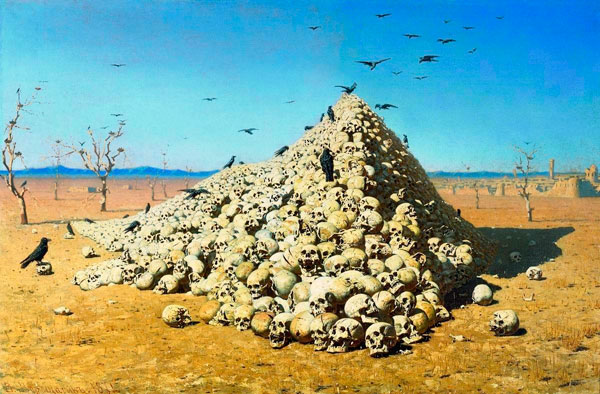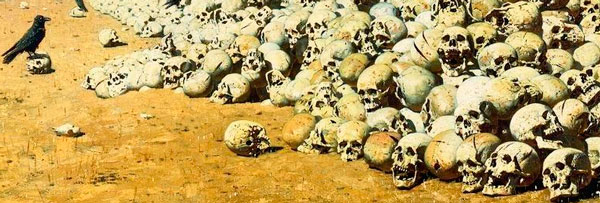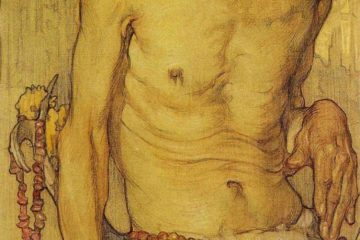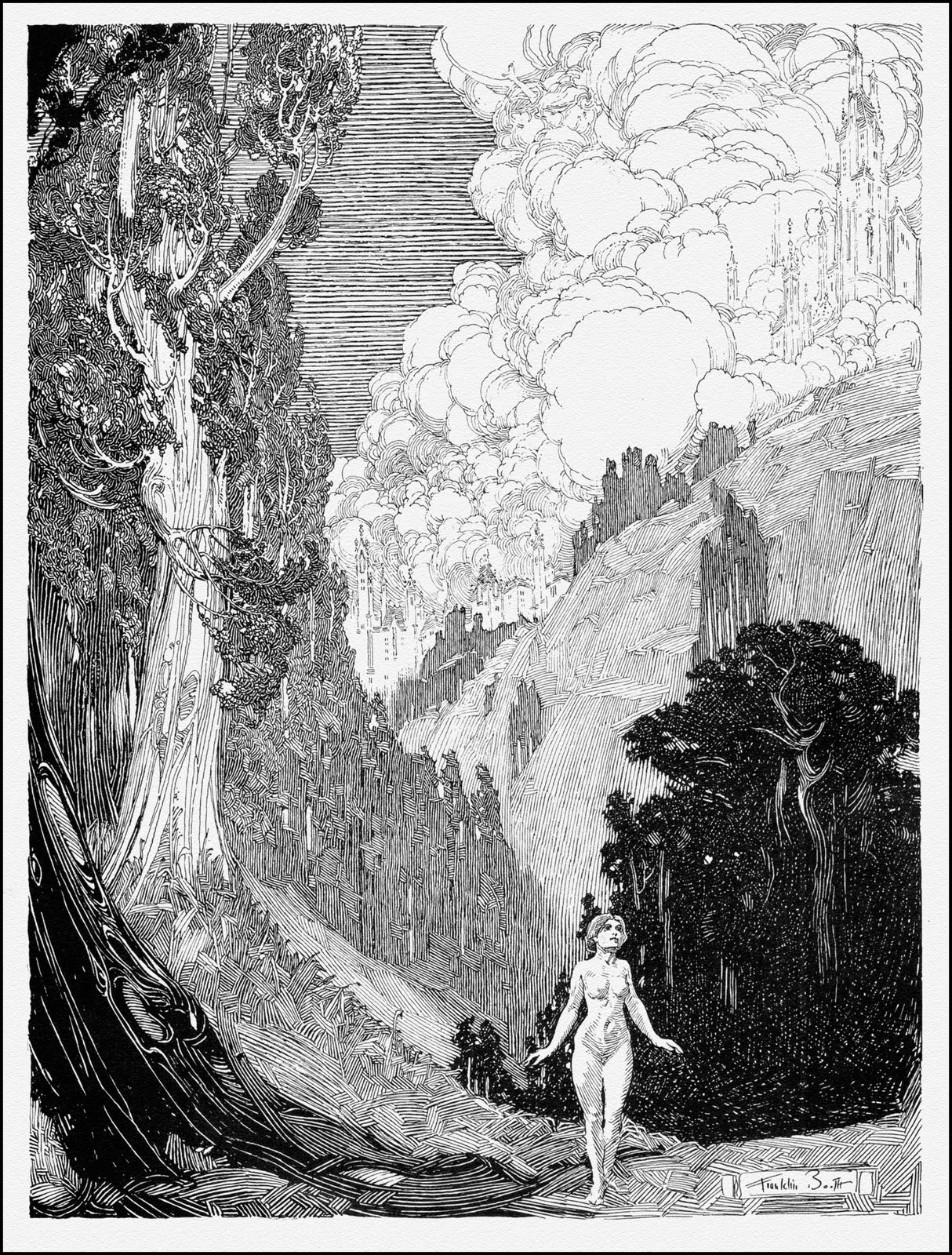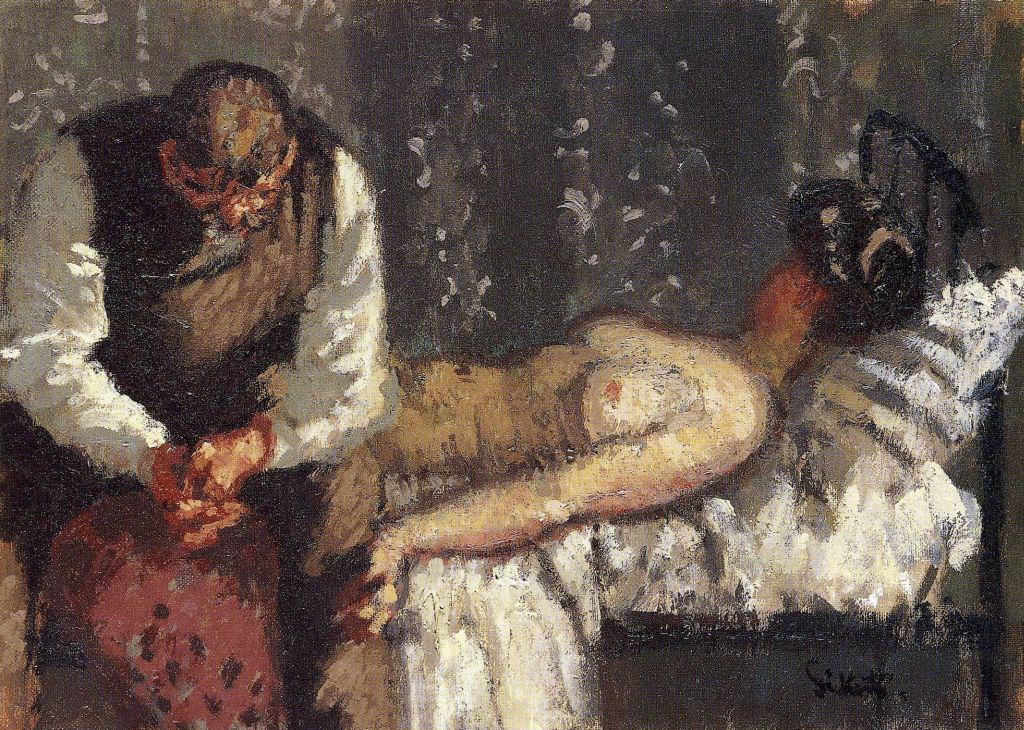In commenting on another blog about Russian artists (which I’ve featured here before), I noticed that somewhere along the lines I’d lost the blog I wrote on one of my personal favorite artists. Seeing the need to remedy that situation, I went and found one of Vasily Vereshchagin’s most famous pieces, one of my favorites.
This is Vereshchagin’s The Apotheosis of War (1871, Oil on canvas), one that gets your attention almost immediately thanks to the skulls.
Vereshchagin was a war artist, and at the time (late 19th century) even fairly well known outside of Russia. Many of his works involve being within the battle, or in the moments right before or after. In this case, Vereshchagin takes the other route, with a battle (and war) long over.
I find it interesting that the palette he used was actually fairly bright, not the dark and fairly depressing muted palettes that seem more commonplace with ideas like this. It’s not unusual for Vereshchagin’s work, many of his works are very bright, but for the tone of the piece it makes it a little more interesting.
As noted on several sites (among them this one), pyramids of skulls like this were left near destroyed towns by conquerors such as Tamerlane, and Vereshchagin uses the idea to reinforce the ideas within the image. The skulls, the destroyed town in the background, and the skeletal trees all show not just a war, but a destruction of life itself.
I find it interesting too that Vereshchagin imparts uniqueness to most of the skulls, and yet at the same time there are just so many of them. He seems to be adding that not just the sheer numbers of the dead are striking, but also driving it home that an individual life was taken as well.
Vereshchagin (noted on that site above and in a number of other places) etched the phrase, “Dedicated to all great conquerors, past, present and future”, into the frame of the work.Vereshchagin, in not a terribly subtle way, is showing that war is evil, and ultimately completely destructive.
Opinions?
